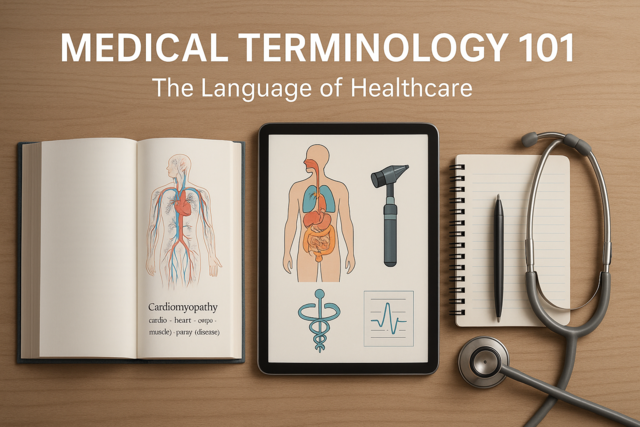Drug, alcohol, and tobacco abuse aren't just about "getting high" or "having fun". There are serious health risks in taking these substances that you should know about. Each of these substances carry serious negative effects on the body, some of which are irreversible.
Heath Effects of Smoking
Smoking has many negative health effects, from causing autoimmune diseases to causing lung cancer. Some of the negative health effects of smoking include the following:
-
Autoimmune Diseases. Smoking has the effect of causing several types of autoimmune diseases in the body, including rheumatoid arthritis and Crohn's disease. In fact, you have twice the risk of developing rheumatoid arthritis if you are a smoker.
-
Type 2 diabetes. Smoking carries a risk of type 2 diabetes or "adult-onset diabetes". Smokers have a 30-40 percent greater likelihood of developing type 2 diabetes when compared to people who don't smoke.
-
Decreased bone density. People who smoke have a greater risk of having a decrease in their bone density. Things like activity level, alcohol consumption, and your weight also play a role in getting osteoporosis. Those at highest risk of osteoporosis (decreased bone density) include men who smoke and older women. Fortunately, this can be a temporary phenomenon as quitting smoking will return your risk of osteoporosis to normal. Women who smoke early in life have the greatest risk of developing osteoporosis after menopause by lowering the level of estrogen in their bodies.
-
Your heart and blood cells. Smoking increases your risk of a number of heart related conditions, including:
-
Coronary artery disease
-
Hypertension
-
Chest pain
-
Heart attacks
-
Damage to your arteries
-
Coronary heart disease
-
Cardiovascular disease
-
Aneurysms (bulging blood vessels)
-
Atherosclerosis (a buildup of plaque in the arteries)
-
Stroke (death of brain cells)
-
Peripheral artery disease (plaque buildup in the arteries leading to the legs)
Breathing in tobacco smoke has the ability to change the chemistry of your blood and damage the blood vessels in your body. Cells that make up the inner lining of the blood vessels can react to cigarette smoke, causing plaque buildup and many of the diseases mentioned above. You can also have an increase in your blood pressure and heart rate if you choose to smoke.
-
Your breathing. Cigarette smoke can affect your breathing and can cause scarring of the lungs. When you smoke, you increase your risk of chronic bronchitis (which swells the lining of your bronchial tubes), emphysema (when the walls of the air sacs of the lungs cannot exchange oxygen and carbon dioxide), pneumonia (an infection of the lungs), chronic obstructive pulmonary disease (a chronic disease that causes chest tightness, shortness of breath and wheezing), tuberculosis (another infection of the lungs), and asthma (a disease of the upper airways.
-
Your vision. Smoking can affect your vision as well. Research studies have found a connection between smoking and a higher than normal risk of developing macular degeneration (an eye disease that increases with age), damage to the optic nerve, and cataracts.
-
Cancer. Smoking can increase your risk of lung cancer and other types of cancer. There are more than 7,000 chemicals in tobacco smoke that do damage to your lungs, trachea, and bronchial tree. Smoking is linked to cancer of the uterus, the cervix, the liver, your kidneys, the pancreas, the bladder, the stomach, the larynx, the nasal cavity, the nasopharynx, the lip the oral cavity, the esophagus, the bronchus, the trachea, the rectum, the colon, and, of course, the lungs.
All types of cigarettes can cause cancer and there isn't any type of cigarette that is safe. Any type of cigarette, including light cigarettes, put you at a higher risk of developing smoke-related diseases. People who smoke light cigarettes inhale the same toxic chemicals when compared to those who smoke normal cigarettes. Fortunately, this type of cigarette has recently been banned for use by humans.
Menthol Cigarettes and Cancer
Even menthol cigarettes cause cancer and other smoking-related diseases. Some people believe that menthol cigarettes are safer for you but this has not been borne out by research. Menthol cigarettes, like other cigarettes, cause harm to most of the organs of the body and cause cigarette-related diseases like respiratory diseases, heart disease, and various types of cancer. Menthol cigarettes also affect the fertility of both men and women. They are, of course, dangerous when used during pregnancy. There is also evidence that menthol cigarettes are more addicting than regular cigarettes.
Cigar and Pipe Smoking
People who smoke pipes or use cigars are at a greater risk of tobacco-related diseases. They contain the same cancer-causing and toxic chemicals that are found in cigarettes. Smoking pipes and using cigars can result in tongue cancer, cancer of the throat, cancer of the mouth, lung cancer, cancer of the lip, laryngeal cancer, esophageal cancer, and cancer of the bladder. Daily smoking of cigars put you at a greater risk of developing lung diseases (such as emphysema) and cardiovascular disease.
Health Effects of Drugs
The use of illicit drugs also causes adverse effects on the body. They can cause dramatic alterations in your appetite and increases in your body temperature. Drug withdrawal can also cause adverse effects on the body, including nausea and vomiting, diarrhea, cold flashes, difficulty sleeping, bony pain, muscle pain, appetite changes, tiredness, alterations in mood, and restlessness.
These are the drugs that cause the most damage to the body:
-
Cocaine. Cocaine users usually take in cocaine through the oral route but they can also take it by inhaling it, using it intravenously, and using in through snorting. Some cocaine users have the drug absorbed through their gums. Any way that cocaine is used can lead to adverse effects on the body, especially when used in toxic amounts. Some adverse effects on the body include seizures, strokes, heart attacks, and sudden death.
-
Heroine. Frequent use of heroine causes changes in the physiology and physical structure of the brain. This has been known to create long-term changes in the hormonal and neuronal systems of the brain, some of which is irreversible. There can be disintegration of the white matter of the brain from heroin abuse. This can affect the person's response to stressful situations, their ability to regulate their behavior, and their decision-making abilities. Heroin is also extremely addictive and carries a risk of tolerance. This means that more and more of the drug is necessary to have the same effect over time.
Withdrawal can also have adverse effects on the body. Using heroin and suffering from withdrawal can result in leg movements, goose bumps, cold flashes, nausea and vomiting, diarrhea, difficulty sleeping, bone and muscle pain, and restlessness. Withdrawal symptoms are at their worst when the person has stopped using heroine for between 24 and 48 hours. These symptoms don't go away for up to a week after stopping the drug, although some people can have withdrawal symptoms for months.
Heroine is also addicting. It can cause a relapsing, chronic disease that involves more than just physical dependence on the drug. The heroine user will attempt to seek out the drug and use it, regardless of the consequences.
-
Inhalants. People who use inhalants can have adverse reactions to their body. Inhalants involve using highly concentrated chemicals in aerosol sprays or solvents. The use of inhalants, can cause fatal heart failure, irregular heartbeats, and rapid heart rate, sometimes within minutes of using the drug. There is a condition called "sudden sniffing death" that can happen when a person uses inhalants--even if it's the first time the person uses. Sudden sniffing death is linked primarily with those who use aerosols, propane, or butane.
Inhalant abuse can cause damage to the body through asphyxiation (lacking in enough oxygen), choking (from inhaling the fumes), coma (from brain shutdown), seizures (from dangerous electrical discharges in the brain), and suffocation (from having a plastic bag over the user's head). People can die from inhalant abuse if they become intoxicated and choose to drive, getting into a motor vehicle accident.
Most inhalants are quite toxic. The biggest adverse effect that inhalant use has on the body is the damage to the brain, which can be widespread and long-lasting. Using inhalants can cause such damage to nerve fibers that it can mimic multiple sclerosis. Prolonged use of inhalants can cause neurological syndromes that result from damage to parts of the brain that control hearing, vision, movement, and cognition. Prolonged use can also lead to dementia-like symptoms.
Inhalants are damaging to other organs of the body. Using inhalants for a long period of time can result in kidney damage, liver damage, lung damage, and heart damage. Some of the damage caused by the use of inhalants is reversible while other aspects of inhalant abuse are irreversible.
Using inhalants while pregnant can cause developmental disabilities in the unborn fetus. Studies done on animals indicate that exposure to inhalants by a fetus can cause skeletal abnormalities, altered regulation of metabolism, changes in body composition (in male infants), and reduced birth weight. There is evidence of developmental delay in children born to mothers who use inhalants. Human studies on inhalant abuse has not been done but it is suspected that the same things that occur in animal models also occur in human models.
Eating disorders have also been linked to inhalant abuse among both female and male students. Inhalant abuse is more common among children and young teens so it may affect their neural development as well.
-
Marijuana. Marijuana use also has adverse effects on the body. The use of marijuana can result in "marijuana use disorder", which involves a sort of addiction to marijuana. Approximately a third of all marijuana users suffer from marijuana abuse disorder. Teens who abuse marijuana before they reach 18 years of age have between 4 and 7 times the incidence of marijuana use disorder when compared to adults who abuse marijuana.
Marijuana use is often linked to dependence. This is when the marijuana user feels symptoms of withdrawal when not using the drug. Symptoms include physical discomfort, restlessness, cravings, poor appetite, sleeping problems, mood swings, and irritability. This type of dependence is linked to the adaptation of the brain to using large amounts of the drug by reducing the number of endocannabinoid neurotransmitters.
Marijuana use disorder can turn into addiction when the user cannot stop taking the drug even when it interferes with his or her life. It is unknown as to how many people are addicted to marijuana because research focuses on dependence to the drug rather than on addiction to the drug. Dependence occurs in about 9 percent of marijuana users, although the risk of dependence is as high as 17 percent in those individuals who begin using marijuana in the teenage years.
-
MDMA. MDMA is a popular drug of abuse, partly because it produces euphoria within an hour of taking the drug. The positive effects of MDMA use includes a general sense of well-being, decreased anxiety, increased empathy, emotional warmth and mental stimulation. Some users experience an enhancement in their sensory perception.
The bad effects of MDMA use include a reduction in mental abilities, reduced interest in sex, thirst, poor appetite, sleep disturbances, aggression, impulsiveness, sadness, irritability, restlessness, and anxiety. Other adverse effects on the body include heart arrhythmias, kidney failure, heart failure, hypertension, dehydration, hyperthermia, blurry vision, muscle cramping, jaw clenching, teeth grinding, sweating, chills, and nausea.
If a person overdoses on MDMA, they can suffer from seizures, loss of consciousness, panic attacks, fainting spells, and hypertension. MDMA is not a harmless drug. It can produce a wide variety of dangerous health effects, including blurry vision, muscle cramping, teeth clenching, sweating, chills, and nausea.
Because MDMA is linked to brain stimulation and an increase in physical activity, it can result in hyperthermia (a rise in body temperature). This requires prompt medical attention as it can lead to the breakdown of the muscles, which, in turn, can cause kidney failure. Some susceptible users of MDMA can suffer from heart failure, hypertension, and dehydration.
MDMA can also lessen the ability of the heart to pump blood efficiently, particularly during times of increased physical activity. MDMA is quickly absorbed into the bloodstream and interferes with the ability of the body to metabolize the drug. This can result in high blood levels of the drug, which can increase its toxicity.
MDMA also blocks the metabolism of other drugs, including some of the impurities found in tablets of MDMA. After using MDMA for several hours, there can be a reduction in the individual's mental abilities that can last for up to 1 week after using the drug. It can interfere with the user's ability to perform skilled or complex tasks, such as operating heavy machinery or driving a car.
- Methamphetamines. There are many adverse effects on the body of users of methamphetamines, including a high risk of addiction to the drug. People addicted to methamphetamines compulsively seek out the drug and use it regardless of its adverse effects.
Tolerance to the drug's euphoric effects occurs whenever the drug is used often. With tolerance, the user needs to take more and more of the drug to have the same effect. They take it more often or change how they use the drug in order to get the pleasurable effect.
Chronic users of methamphetamine may feel no pleasure in using the drug, which increases their abuse of the drug. Withdrawing from methamphetamines happens when the chronic user stops taking the drug. Common symptoms of withdrawal include drug cravings, tiredness, anxiety, and depression. Chronic methamphetamine abusers may have symptoms of delusions, auditory hallucinations, paranoia, violent behavior, mood swings, difficulty sleeping, confusion, and anxiety. The psychotic symptoms of methamphetamine abuse can last for many months or even years after stopping the drug.
The main effect of methamphetamine abuse is its effect on the brain. Imaging studies have shown changes in the dopamine system of the brain that goes on to affect verbal learning and a decrease in motor speed. There can also be functional and structural changes in those areas of the brain linked to memory and emotion, which is why abusers of the drug have so many cognitive and emotional problems.
Methamphetamine abuse has been linked to adverse effects on microglia, which are the non-nerve cell brain cells within the brain. These are the support cells of the brain that defend the brain against infections and remove any nerve cells that have become damaged. Increased activity of these microglial cells can cause damage to healthy nerve cells. Some of the adverse effects of methamphetamines is at least partly reversible. The microglial cells can become more active, especially after two years following stoppage of the drug. Sometimes the nerve cells can recover after stopping the drug.
Some changes in the brain from methamphetamine abuse can last a long time. Use of methamphetamines can lead to an increase in stroke, which causes irreversible brain damage. Parkinson's disease is also linked to methamphetamine abuse.
There are physical changes to the body with methamphetamine abuse. These can include skin sores, tooth loss, tooth decay, and weight loss. The tooth loss is usually caused by poor dental hygiene and poor nutrition, as well as teeth grinding and dryness of the mouth. Users of methamphetamine often pick at their skin, resulting in skin sores.
Other long-term adverse effects of methamphetamine abuse include dental problems, mood swings, aggressive behavior, increased distractibility, motor skill deficits, deficits in thinking, changes in the function and structure of the brain, psychotic symptoms, and addiction to the drug.
-
CNS Depressants. Even though barbiturates and benzodiazepines have helped many people, they have a high abuse potential when used without a prescription. There are few studies done on sleep aids that are not benzodiazepines; however, it is believed that they have adverse effects on the body in ways similar to benzodiazepines.
Symptoms of CNS depressants include sleepiness and poor coordination. Tolerance to the drug quickly becomes a problem and the symptoms usually disappear. With tolerance, the individual needs to use larger amounts of the drug in order to have the same effect. Ongoing use of CNS depressants can lead to withdrawal symptoms and physical dependence.
CNS depressants slow the activity of the brain and, when the individual stops taking the drug, a rebound effect can occur, resulting in seizures or other adverse effects. Although withdrawal from benzodiazepines can be difficult, it is fortunately not life-threatening. Withdrawal from barbiturates, however, can be very dangerous and even life-threatening. People abusing either barbiturates or benzodiazepines should gradually taper off the drugs rather than trying to stop them abruptly.
-
Opioids. Many people take opioids as prescribed for the management of pain. However, when people abuse this class of drugs, there can be side effects, including depression of the respiratory centers of the brain and death from asphyxia. Short term use of opioids generally doesn't result in an addiction to the drug but long term use is highly addictive.
Physical dependence can result from regular or long term abuse of opioid drugs and many people become addicted. People can also develop a physical dependence on the drug, which is not the same thing as being addicted to the drug.
Withdrawal symptoms after stopping opioid abuse include involuntary leg movements, goose bumps, cold flashes, vomiting, diarrhea, difficulty sleeping, bony pain, musculoskeletal pain, and restlessness.
There has also been research done on the effects of opioids on brain function. A decrease in respiratory drive can affect the amount of oxygen the brain receives, resulting in hypoxia. There are both long term and short term neurological effects of opioid abuse that can lead to permanent damage to the brain and coma.
Heroin, a potent opioid, has been linked to poor responses to stressful situations, an inability to regulate behavior, and difficulty in decision-making.
-
Stimulants. Stimulant use can result in physical dependence and addiction. Withdrawal from stimulants can result in sleep difficulties, depression, and tiredness. Using stimulants repeatedly can be linked to feelings of paranoia or hostility. Psychosis is also a problem with stimulant abuse. Those who take high doses of stimulants can have increased body temperatures as well as an irregular heartbeat. Seizures and heart failure can also result from stimulant abuse.
Health Effects of Alcohol
Drinking too much alcohol can be harmful to your health and can have adverse effects on the body. It is estimated that the excessive use of alcohol has led to about 88,000 deaths from alcohol abuse and accidents related to alcohol abuse. There have been 2.5 million years of potential life lost in the US between 2006 and 2010. Those who died from alcohol use died an average of thirty years before their expected rate of death.
Excessive use of alcohol has been responsible for approximately one out of every ten deaths among adults aged 20 to 64 years of age. Alcohol use also has extremely significant economic costs. An estimated $249 billion USD has been lost due to alcohol consumption.
Excessive drinking includes drinking by pregnant women, drinking in those under the age of 21, heavy drinking, and binge drinking. The most common form of excessive drinking is binge drinking, which is defined as drinking 4 or more alcoholic beverages at a single time (in women) or drinking 5 or more alcoholic beverages at a single time (in men).
Heavy drinking is defined as drinking eight or more alcoholic beverages per week (among women) or drinking 15 or more alcoholic beverages per week (among men). Both binge drinking and heavy drinking can have adverse effects on the body and mind.
Short term adverse effects on the body due to excessive alcohol abuse included the following:
-
Fetal alcohol syndrome in women who drink while pregnant
-
Stillbirth or miscarriage in women who drink while pregnant
-
Risky sexual behaviors, such as having sex with multiple partners or having unprotected sex
-
Alcohol poisoning, which is a medical emergency
-
Violent behaviors, including domestic violence, sexual assault, suicide, and homicide
-
Alcohol-related injuries, including burns, drowning, falls, and motor vehicle accidents
There are also long-term health risks of abusing alcohol. Many chronic diseases are linked to the excessive use of alcohol. Some of the major effects of alcohol on the body and mind include the following:
-
Mental health issues, such as anxiety and depression
-
Memory and learning problems, including poor performance at school and dementia
-
Cancers of the colon, liver, esophagus, throat, mouth, and breast
-
Hypertension
-
Alcoholism or dependence on alcohol
-
Social difficulties, such as unemployment, family discord, and lost work productivity
People who drink too much alcohol can face both long term and short term adverse effects on the body, some of which can be irreversible.































